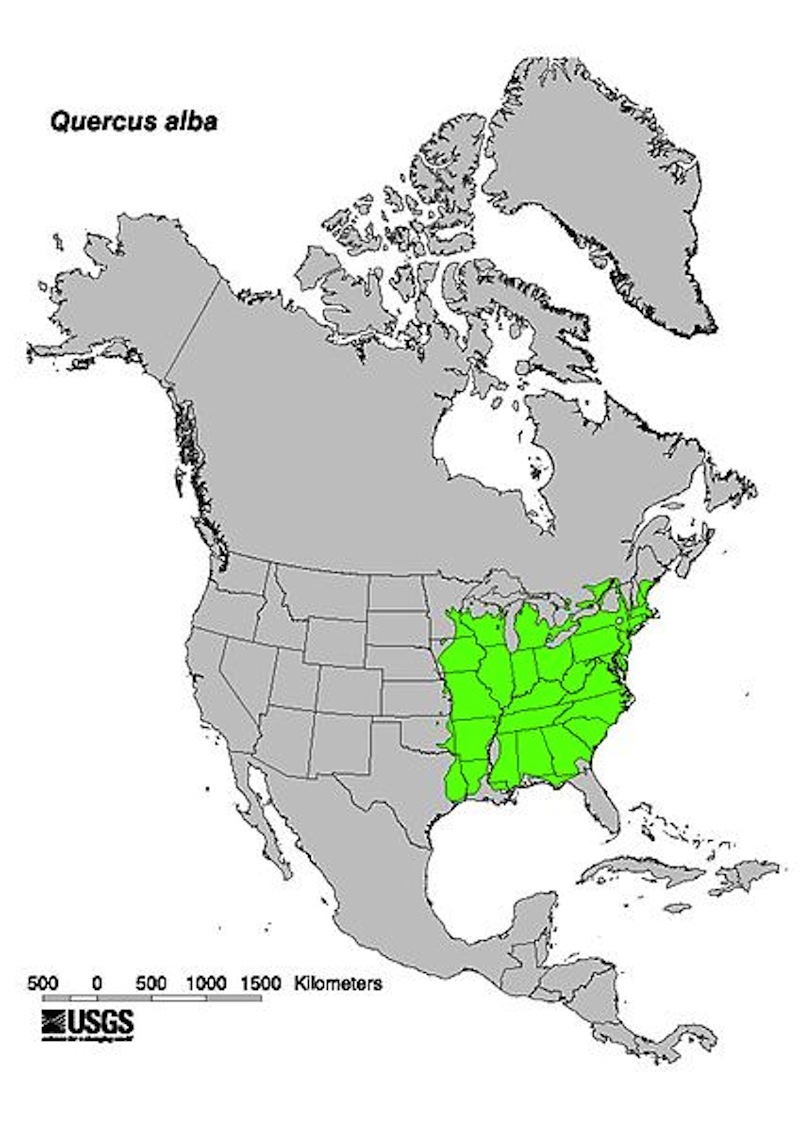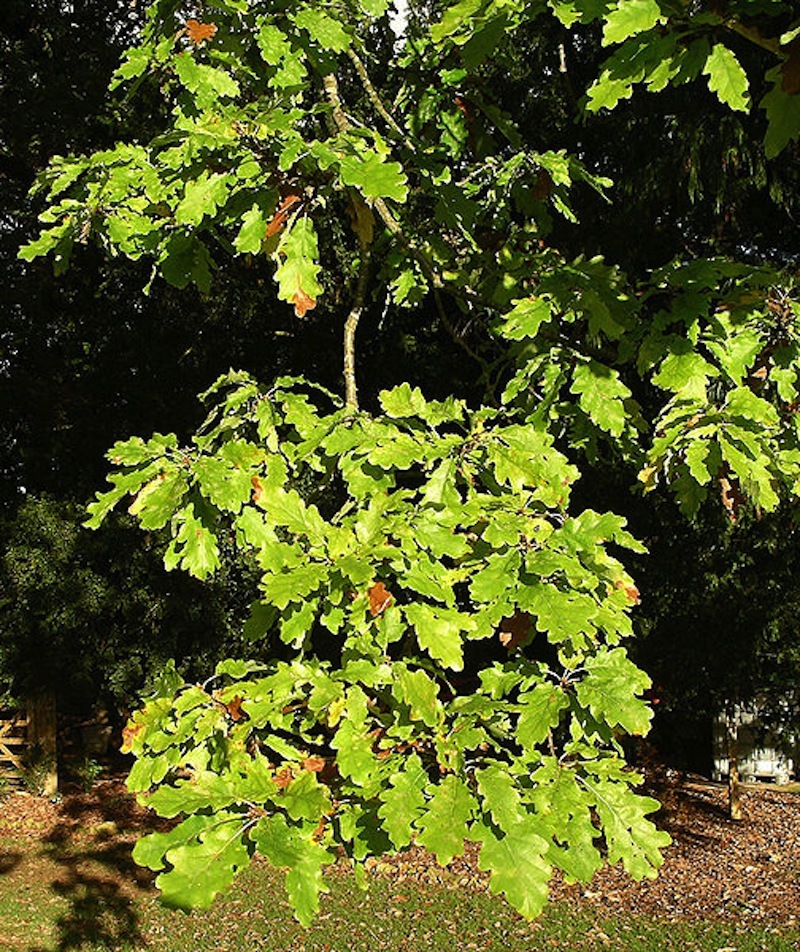White Oak : White Oak Identification
White oak, or Quercus alba, is usually easy to identify. Even in the winter months, the white oak’s overall shape is rounded and wide and it usually grows between 50 and 75 feet tall, although some trees have grown over 100 feet. The tree usually grows fairly slowly, with an average growth rate of one foot per year. The trunk of a white oak can grow up to four feet in width. White oaks flourish in sunlight and therefore usually grow on higher ground in the woods and sometimes grow near lakes or streams. White oaks are found in about half of the United States. They are native to eastern North America and are mostly found in eastern states and also in the northeast and southeast. They can also be found in parts of Canada, including Ontario and Quebec.
Once you have identified the overall shape of the tree, you can move on to more specific aspects. White oaks are distinguishable by their light gray bark that looks like long scales and can often can be peeled off in small pieces. White oaks have both male and female flowers. The male flowers are greenish-yellow catkins that are long, thin, and hang from twigs. Female flowers are smaller than male flowers and are red and sometimes look spiky.
The leaves of a white oak are from four to nine inches long and are alternate, simple, and lobed with rounded tips. They are dark green on the top, and the undersides are a paler green or white. In the fall, the leaves turn red or brown. The fruit of white oak trees are acorns that often grow to be over an inch long and have a corrugated cap. White oak twigs are shiny, hairless, and are often red and sometimes have a purplish hue. White oak buds are red or brown, small, hairless, and round. Using all these clues, I am sure you will be able to properly identify a white oak tree!



